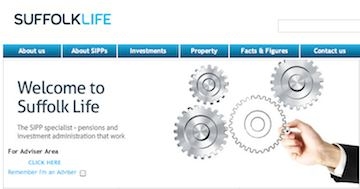
Suffolk Life has called for HM Revenue and Customs' rules to be relaxed regarding peer-to-peer lending for Sipp investors.
A HMRC technicality prevents Sipp investors from accessing peer-to-peer lending as an investment due to taxable property provisions.
Peer-to-peer lending, also known as 'save to lend' allows people to lend money to other consumers or businesses.
An estimated £20m was invested via peer-to-peer lending in January 2013 alone despite the sector being unregulated.
Greg Kingston, head of marketing for Suffolk Life, said: "Many peer to peer businesses have models that spread the risk and prevent individual lenders loaning more than £10 or £20 to an individual borrower.
"However, even though these amounts are small, Sipp investors cannot lend due to the fact that there is no control over how the borrower uses the money. Individual borrowers could use the loan to purchase a tangible moveable asset or residential property, resulting in tax charges."
{desktop}{/desktop}{mobile}{/mobile}
He said the rule was a "classic case" of investment restriction being overtaken by market demand.
"The risk of Sipp investors investing in taxable property via peer-to-peer lending is negligible, and this is a classic case of market innovation and demand overtaking rules on investment restriction that were put in place before peer-to-peer lending was created.
"Relaxation of these rules would enable Sipp investors to help meet a clear funding gap and support economic stimulation, although it should not be forgotten that there will always be a risk involved."
A report by L&G chief executive Tim Breedon in 2012 suggested investment in small businesses needed to be improved or it could lead to a funding gap of up to £190bn in the next five years.
• Want to receive a free weekly summary of the best news stories from our website? Just go to home page and submit your name and email address. If you are already logged in you will need to log out to see the e-newsletter sign up. You can then log in again.

